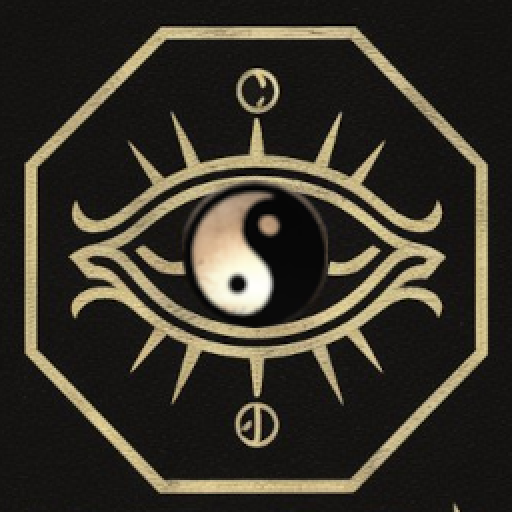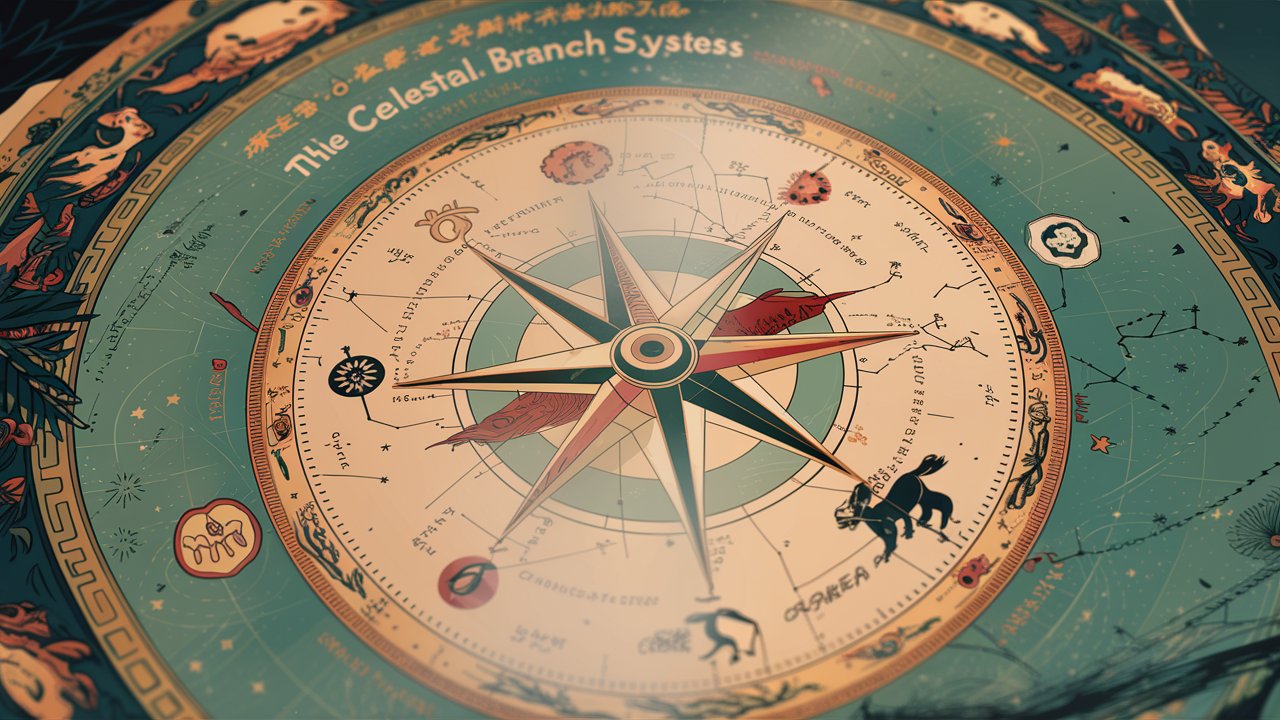Introduction
The Stem-Branch system, known as “Gan Zhi” in Chinese, is an ancient cosmological tool that has been instrumental in recording time, predicting auspiciousness, and understanding the natural world. This system, deeply rooted in Chinese metaphysics, combines the cycles of ten Heavenly Stems and twelve Earthly Branches, creating a comprehensive and symbolic method for interpreting the universe’s rhythms.
Heavenly Stems and Earthly Branches
Heavenly Stems and Earthly Branches
The Heavenly Stems weave a rich tapestry of influence, each Stem marking a decade of time with its own unique vibration and impact. As they rotate through the calendar, they impart their essence to the cycles of time, affecting the character of the years, months, days, and even hours.
Jia (甲) and Yi (乙), as the Wood stems, are the pioneers of this celestial sequence. They embody the verdant spirit of growth and the awakening of life. Jia, being Yang Wood, signifies the robust and upward surge of nature’s potential, while Yi, as Yin Wood, offers flexibility and the tender shoots that reach for the light. Together, they initiate the cycle with a promise of renewal and the unending cycle of birth and regeneration.
Succeeding the Wood stems, Bing (丙) and Ding (丁) ignite the Fire stems, embodying the fervor and zeal that are the driving forces of life. Bing, the Yang Fire, represents the bright and passionate flame that consumes and illuminates, while Ding, the Yin Fire, provides warmth and the steady glow that sustains. They follow with the understanding that all things must be fueled by the heat of passion and the light of consciousness to thrive.
Wu (戊) and Ji (己), the Earth stems, then step in to anchor the volatile energies of Fire. Wu, the Yang Earth, is the sturdy and reliable foundation that bears the weight of creation, and Ji, the Yin Earth, is the fertile and nourishing soil that feeds the roots of life. They ensure that the energies of the cosmos have a solid ground on which to manifest and grow, providing the necessary stability and sustenance for all that exists.
Geng (庚) and Xin (辛), as the Metal stems, introduce the transformative and purifying properties of Metal. Geng, the Yang Metal, is the forge and the anvil, the power that shapes and molds, while Xin, the Yin Metal, is the delicate craft and the refined essence that results from this process. They bring about the necessary changes that refine the粗糙(roughness) of existence into the smoothness of experience and the clarity of understanding.
Finally, Ren (壬) and Gui (癸), the Water stems, close the cycle with the qualities of fluidity and adaptability. Ren, the Yang Water, is the vast ocean and the flowing rivers, the ever-moving current of life, while Gui, the Yin Water, is the stillness of the deep and the reflective surface of the lake. They embody the adaptability and resilience that allow life to sustain and continue through its ever-changing journey.
Through this decade-long cycle, the Heavenly Stems ensure that every aspect of time is touched by a variety of energies, creating a balance that is as essential to the universe as the very air we breathe. This cycle is a testament to the ancient wisdom that has been revered for centuries, a reminder that life is a continuous flow of change and constancy, of motion and rest, of becoming and being.
The Cosmic Dance of Stems and Branches
When the celestial rotation of the Heavenly Stems intertwines with the rhythmic procession of the Earthly Branches, they orchestrate the “Gan Zhi” cycle, a grand 60-year symphony of time. This cycle is a cornerstone of Chinese temporal architecture, employed to mark not just the passage of years, but also to delineate the phases of months, the cadence of days, and the ticks of hours.
Each union of a Heavenly Stem with an Earthly Branch is a marriage of cosmic energies, resulting in 60 distinct pairings, each imbued with its own narrative and potency. These pairings are not arbitrary; they are the script of a grand play written across the heavens and enacted on earth, influencing the currents of life and the decisions of people.
The “Gan Zhi” cycle transcends the mundane, reaching into the esoteric realms of Chinese astrology. Here, the combinations are used to chart the courses of lives, to predict the alignment of stars with personal destinies, and to understand the subtle interplay of energies that shape an individual’s character and journey.
In the art of divination, these pairings serve as keys to unlock the mysteries of the future and interpret the signs of the present. They are the building blocks of I Ching hexagrams, where each line of the hexagram is influenced by the Stem-Branch pairings, providing a snapshot of a situation and guidance for action.
Feng shui, the ancient practice of harnessing the flow of chi, or life energy, also relies heavily on the Stem-Branch cycle. It is used to determine the most auspicious times for making significant changes to one’s environment, from the placement of a home’s furniture to the construction of buildings, aiming to create harmony with the natural world.
Moreover, the Stem-Branch system extends into the cultural fabric of China, affecting naming conventions, where parents often select names that resonate with the attributes of the Stem-Branch pair governing the year of their child’s birth. This ensures that the child’s name carries a harmonious and supportive energy throughout their life.
The 60-year cycle is also reflected in traditional Chinese medicine, where the cycles of Stem-Branch are believed to influence the balance of qi, or vital energy, within the body and the environment. This understanding guides the diagnosis and treatment of health conditions according to the cycles.
In essence, the Stem-Branch cycle is a living testament to the interconnectedness of all things in the universe. It is a dynamic blueprint that has been revered for millennia, a system that encapsulates the wisdom of the cosmos and applies it to the human experience, offering a profound understanding of our place within the grand cycle of life.
Applications in Astronomy and Calendar Systems
The Stem-Branch system, with its profound implications and intricate mechanics, stands as a fundamental pillar in the construction and function of the Chinese calendar. This calendar is not merely a system for tracking time; it is a lunisolar masterpiece that harmoniously integrates the lunar phases with the solar progression, reflecting the delicate balance between the cycles of the moon and the yearly journey of the sun.
The precision of this calendar is evident in its ability to predict seasonal changes with remarkable accuracy. It serves as an agricultural compass, guiding farmers through the ebb and flow of planting seasons, ensuring that crops are sown and harvested in accordance with the natural rhythms of the earth. This alignment with nature’s patterns is crucial for the sustenance and prosperity of communities, as it helps to maximize yields and maintain the fertility of the land.
Moreover, the Stem-Branch system plays a vital role in identifying auspicious moments for rituals and celebrations. It is the silent conductor of China’s rich tapestry of festivals and traditional events. From the exuberant revelry of the Spring Festival to the lanterns of the Mid-Autumn Festival, the calendar provides a framework that not only marks these occasions but also imbues them with deeper significance.
The system’s influence extends to the realm of Chinese astrology, where the Stem-Branch indicators are used to forecast the energetic currents of the year. Each year is associated with a specific Stem-Branch pair, which is believed to influence the collective mood and the general fortunes of the year. This annual forecast is eagerly awaited and deeply respected, shaping cultural practices and personal decisions.
In addition, the Stem-Branch system is integral to the practice of Chinese medicine, where the cycles are used to understand the flow of qi, or life energy, within the body and the environment. The system helps to diagnose imbalances and to determine the most harmonious times for treatment, in sync with the natural cycles of the universe.
The Chinese calendar, with the Stem-Branch system at its core, is a testament to the ancient civilization’s profound understanding of the cosmos and its impact on human life. It is a living legacy that continues to influence the cultural, agricultural, and spiritual practices of billions, a timeless guide that connects the heavens and the earth in a dance of time that is as relevant today as it was millennia ago.
Cultural Significance and Modern Use
Beyond its role as a functional tool for timekeeping and seasonal prediction, the Stem-Branch system permeates the very essence of Chinese cultural identity, forming an integral part of the nation’s heritage and ethos. This system transcends the practical to become a living, breathing component of Chinese society, reflected in a myriad of cultural expressions and practices.
In traditional festivals, the Stem-Branch system serves as a beacon, guiding the celebration of the lunar calendar’s annual cycle. Each festival carries with it the energy and characteristics of its corresponding Stem-Branch pair, influencing the rituals, foods, and activities that are considered auspicious and in harmony with the natural world. From the bustling excitement of the Chinese New Year to the reverence of the Qingming Festival, the Stem-Branch system provides a framework that enriches these celebrations with deeper layers of meaning.
Folk beliefs are deeply intertwined with the Stem-Branch system, imbuing everyday life with a sense of cosmic connection and destiny. The pairings are believed to hold insights into an individual’s personality, compatibilities, and life path, shaping the way people understand their place within the universe. This is evident in the practice of marriage matches, where the Stem-Branch combinations of prospective partners are analyzed to ensure a harmonious union.
In the realm of personal identity, the Stem-Branch system is not only a cultural touchstone but also a personal signature. When naming individuals, parents often consider the Stem-Branch pair of the year in which their child is born. This practice ensures that the child’s name carries the auspicious energy and characteristics of that particular Stem-Branch combination, providing a unique identity that is in tune with the cycles of nature.
The influence of the Stem-Branch system extends into the realm of Chinese medicine, where it is believed to hold keys to understanding the human body’s relationship with the natural world. By aligning treatments with the cycles of the Stem-Branch system, practitioners of traditional Chinese medicine aim to restore balance and harmony to the body’s vital energy, or ‘qi’. This alignment is thought to enhance the effectiveness of treatments and promote overall well-being.
Today, the Stem-Branch system continues to be a vibrant and dynamic aspect of Chinese culture. It is a testament to the enduring legacy of ancient wisdom and its relevance in modern life. As a cornerstone of Chinese cultural identity, the Stem-Branch system is a reminder of the interconnectedness of all things and the importance of living in harmony with the natural cycles of the universe.
Conclusion: The Stem-Branch system is a testament to the ingenuity of ancient Chinese civilization. It stands as a bridge between the heavens and the earth, offering a profound understanding of time and its impact on human life. As we delve into this system, we gain insight not only into the past but also into the enduring wisdom that continues to guide and inspire.

